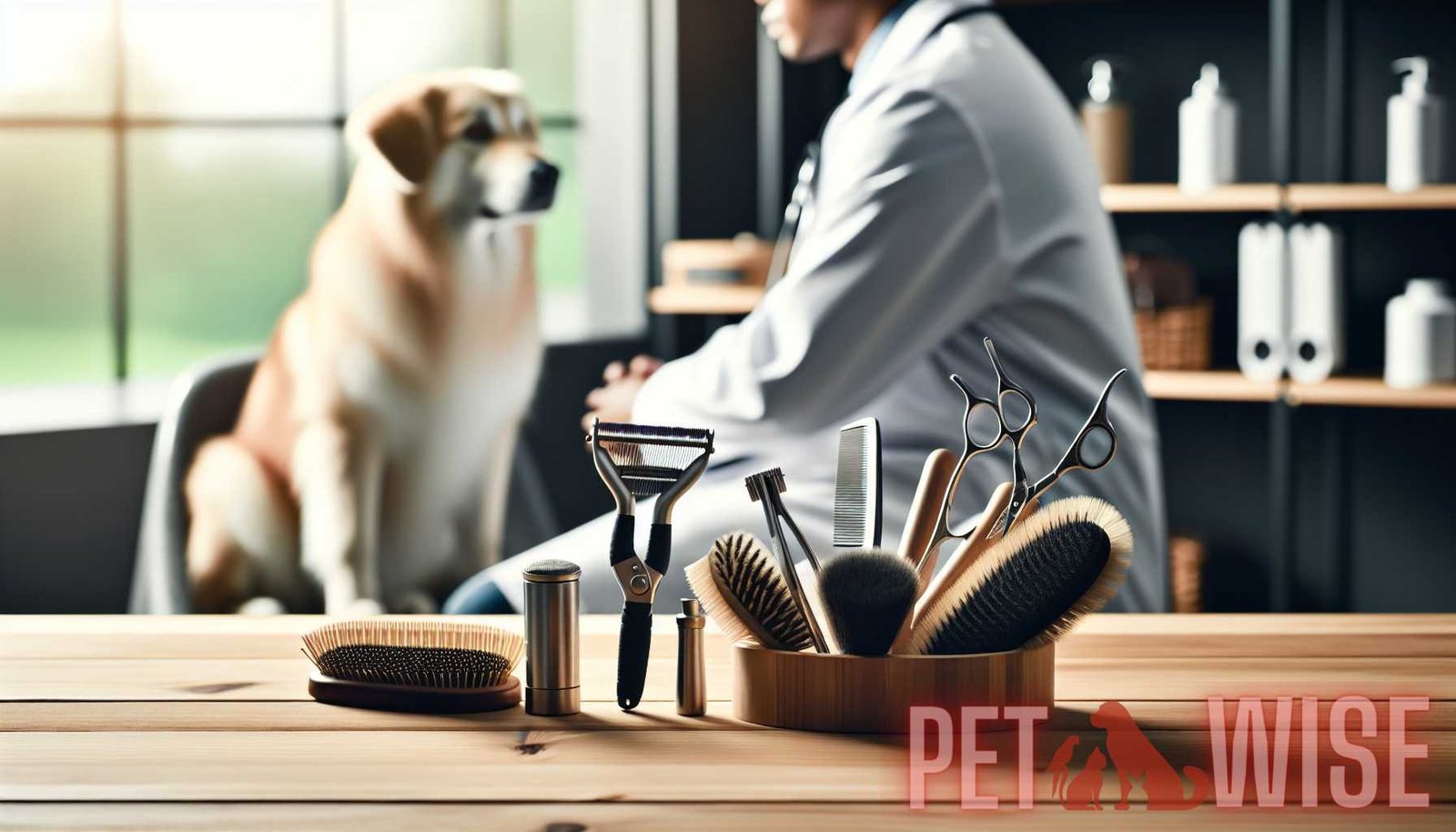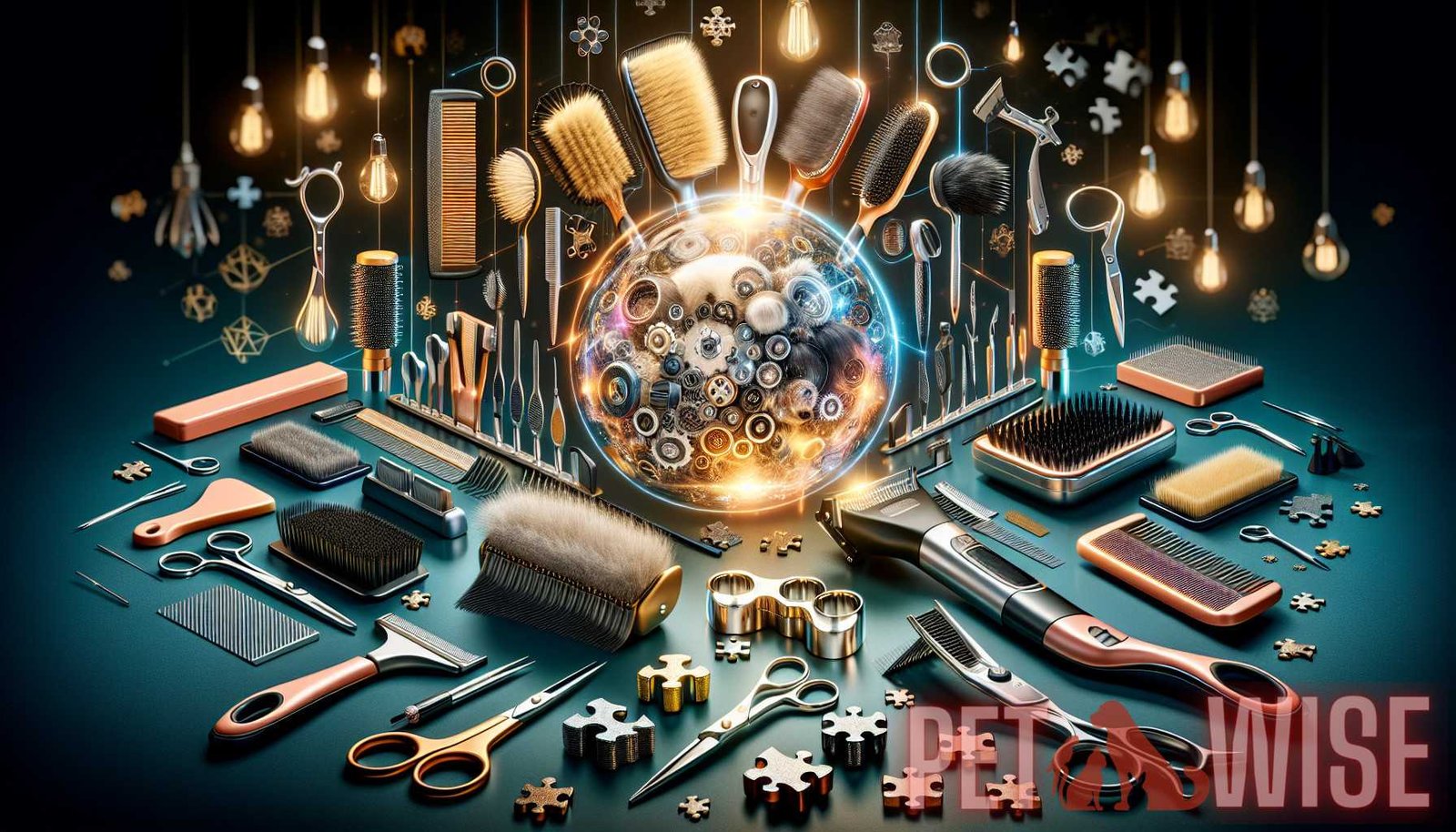Unlocking the Evolutionary Secrets: Discovering the Science of Pet Grooming for Enhanced Coat Health
Grooming is an essential part of pet care, and it serves a multitude of purposes beyond mere aesthetics. Maintaining a healthy coat is crucial for the overall well-being of our furry friends. But have you ever wondered about the science behind pet grooming? Why is it necessary, and how does it impact a pet’s coat health? In this article, we will delve into the evolutionary secrets of pet grooming and explore the scientific aspects that contribute to enhanced coat health.
The Importance of Grooming for Pets
Grooming plays a vital role in maintaining the health and well-being of our pets. Here are some key reasons why regular grooming is crucial:
- Promotes healthy skin: Regular brushing helps distribute oils throughout a pet’s coat, preventing dryness and promoting a healthy skin barrier. It also stimulates blood circulation, which nourishes the skin and promotes the growth of healthy hair follicles.
- Controls shedding: Pets, especially those with long coats, can shed excessively. Grooming helps remove loose hair, reducing the amount of fur left behind in your home and preventing matting and tangling.
- Prevents matting and tangling: Regular grooming prevents the formation of mats and tangles. Mats can be painful and uncomfortable for pets, leading to skin irritation and even infections. Grooming helps keep the coat free from knots, ensuring a comfortable and healthy coat.
- Early detection of health issues: During the grooming process, pet owners can identify any abnormalities or changes in their pet’s skin, coat, or overall body condition. This allows for early detection of potential health issues, such as skin infections, parasites, or lumps.
- Promotes bonding: Grooming sessions provide an excellent opportunity for pet owners to bond with their furry companions. Regular grooming builds trust and strengthens the human-animal bond, enhancing the overall well-being of pets.
With a clear understanding of the importance of grooming, let’s now explore the fascinating science behind pet coat care.
The Evolved Coat Care Instinct
Throughout evolution, animals have developed various mechanisms to care for their coats. These evolutionary adaptations play a significant role in maintaining coat health and protecting animals from environmental factors. Here are a few examples:
- Self-grooming behavior: Many animals, including cats and dogs, engage in self-grooming behavior. This instinctual behavior involves licking, scratching, and nibbling to clean and maintain their coats. Through self-grooming, animals remove debris, excess dirt, and parasites that may have become entangled in their fur.
- Dermal papillae: Dermal papillae are small structures located within the skin that are responsible for the growth and development of hair follicles. These specialized structures contain a rich network of blood vessels, ensuring that the hair follicles receive the necessary nutrients for healthy hair growth. The presence of dermal papillae varies across different animal species, contributing to the diversity in coat types and textures.
- Sebaceous glands: Sebaceous glands are essential components of the skin that secrete sebum, an oily substance that moisturizes and waterproofs the coat. The sebum helps prevent dryness, maintains skin flexibility, and provides protection against environmental elements.
Understanding these evolutionary mechanisms allows us to appreciate the significance of coat care in maintaining the health of our pets.
Scientific Insights into Enhanced Coat Care
Advancements in scientific research have shed light on the various factors that contribute to enhanced coat care. Let’s explore some of the key scientific insights:
Genetics
Genetics plays a crucial role in determining the coat type, color, and texture of animals. Different genes are responsible for the development of specific coat traits. For example, the Agouti gene in cats influences the distribution of pigmentation on the coat, resulting in unique patterns such as tabby, tortoiseshell, and bicolor. Understanding the role of genetics helps breeders and pet owners make informed decisions about coat care and grooming methods best suited for different coat types.
Diet and Nutrition
A well-balanced and nutritious diet is essential for maintaining the health of a pet’s coat. Adequate levels of protein, omega-3 fatty acids, and vitamins contribute to a healthy coat. Protein is vital for hair growth and repair, while omega-3 fatty acids help reduce inflammation and promote a shiny coat. Inadequate nutrition can lead to dullness, dryness, and abnormal shedding of the coat. Consulting with a veterinarian can help determine the best diet for your pet’s coat care needs.
External Factors and Environmental Stressors
External factors and environmental stressors can have a significant impact on a pet’s coat health. Exposure to harsh weather conditions, excessive sunlight, humidity, and pollutants can cause dryness, damage, and fading of the coat. It is important to protect pets from these stressors and provide appropriate coat care to minimize their effects. This can include using sunscreen for pets, providing shelter from extreme weather, and incorporating protective grooming practices.
Grooming Techniques and Products
The adoption of appropriate grooming techniques and the use of effective grooming products can greatly contribute to enhanced coat health. Here are some key factors to consider:
- Regular brushing: Brushing helps remove loose hair, prevents matting, and stimulates blood circulation.
- Bathing: Regular baths help remove dirt, debris, and excess oils that may accumulate on the coat. However, it is important not to over-bathe, as it can strip the coat of natural oils, leading to dryness and irritation.
- Proper drying: Ensuring that the pet’s coat is thoroughly dried after a bath is essential to prevent the growth of bacteria or fungi. Moisture trapped in the coat can lead to skin infections or hot spots.
- Appropriate grooming tools: Using the right tools for grooming, such as brushes, combs, and clippers, is essential to prevent discomfort or damage to the coat. Consultation with professional groomers or veterinarians can help determine the best tools for specific coat types.
- Choosing the right grooming products: Selecting high-quality grooming products, such as shampoos, conditioners, and detanglers, is crucial to maintain a healthy coat. It is advisable to consult with professionals or conduct thorough research to identify products that are safe and suitable for your pet’s specific coat care needs.

Understanding the science of coat care and incorporating appropriate grooming techniques and products can help pet owners ensure the optimal health of their pet’s coat.
An Artificially Intelligent Future for Pet Grooming
Grooming technology is also evolving rapidly, offering innovative solutions for pet owners. Artificial intelligence (AI) is being integrated into grooming tools to enhance the overall grooming experience and improve coat health. Here are some exciting developments in AI-powered pet grooming:
Automated Grooming Stations
Automated grooming stations equipped with AI technology can perform various grooming tasks, such as brushing, deshedding, nail trimming, and even bathing, without human intervention. These stations use sensors and algorithms to analyze the pet’s coat condition and customize the grooming process accordingly. They can provide a stress-free and efficient grooming experience, ensuring enhanced coat health.
Smart Brushes
Smart brushes embedded with AI technology can assess the pet’s coat condition in real-time. These brushes use sensors and algorithms to detect matting, tangles, or other coat issues. They provide real-time feedback and suggestions on the appropriate grooming techniques and products to achieve optimal coat health.
Integrating AI into the grooming process has the potential to revolutionize the way we care for our pet’s coats. These advancements not only provide convenience but also promote better coat health and overall well-being for our furry companions.
The Future of Coat Care: Emerging Trends
The field of coat care is constantly evolving, and new trends and techniques are emerging to enhance the health and appearance of pet coats. Here are some of the emerging trends in coat care:
Natural and Organic Products
As pet owners become more conscious of the ingredients used in grooming products, the demand for natural and organic options is on the rise. Natural and organic pet grooming products contain fewer harsh chemicals and are formulated with plant-based ingredients that are gentle on the skin and coat. These products aim to enhance coat health while minimizing the risk of adverse reactions or sensitivities.
Coat-Specific Grooming Techniques
Coat-specific grooming techniques are gaining popularity as pet owners recognize the importance of tailoring grooming practices to suit different coat types. These techniques involve using specialized tools and methods that are specifically designed to address the unique needs of various coat textures and lengths. Understanding the characteristics of different coat types allows for more effective and targeted grooming routines.
Collaboration between Groomers and Veterinarians
Collaboration between professional groomers and veterinarians is becoming more common in the pursuit of optimal coat care. Groomers, with their expertise in coat care and aesthetic grooming, can work alongside veterinarians to address specific coat and skin issues. This collaboration ensures that pets receive comprehensive and holistic care, addressing both cosmetic and health-related concerns.
By staying informed about emerging trends in coat care, pet owners can make informed decisions about grooming practices, products, and techniques that best suit their pets’ specific needs.
Conclusion
Pet grooming is a multi-faceted process that goes far beyond maintaining an attractive appearance. The science of coat care encompasses evolutionary adaptations, genetics, nutrition, grooming techniques, and environmental factors. Understanding these scientific aspects allows pet owners to make informed decisions to promote enhanced coat health for their furry companions.
As advancements in technology continue to shape the grooming industry, AI-powered tools are poised to revolutionize the way we care for our pet’s coats. Smart grooming stations and brushes provide convenience, efficiency, and personalized grooming experiences.
Embracing emerging trends, such as natural and organic grooming products, coat-specific techniques, and collaboration between groomers and veterinarians, ensures that pets receive the best possible coat care. By staying informed and proactive, pet owners can unlock the evolutionary secrets of pet grooming and provide their beloved companions with a healthy and radiant coat.
Unlock the secrets of pet grooming using the latest insights from Nature’s Secrets, and learn how to achieve radiant pet coats with the tips shared in Radiant Pet Coats.
Don’t forget to consult professional groomers or veterinarians for personalized advice on coat care, as they possess in-depth knowledge and expertise in providing the best care for your pet’s specific coat needs.



